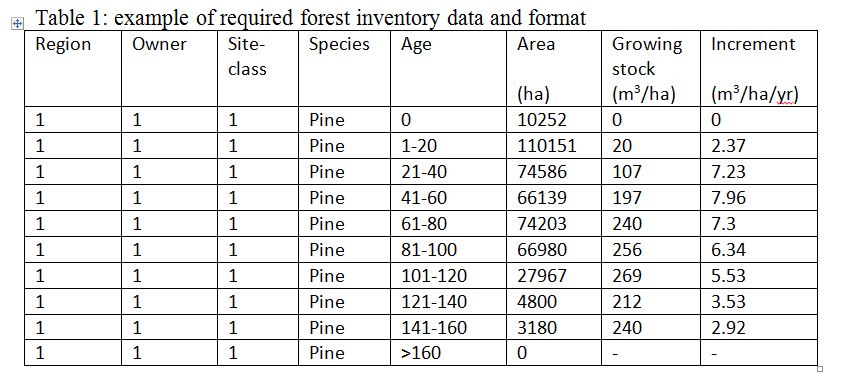EFISCEN can be used to conduct large-scale forest resource assessments. To characterise the forest resource structure, the forest area under study is usually separated into forest types. Forest types in EFISCEN are defined based on administrative unit, ownership, tree species and site class. The number of forest types usually depends on the level of detail of inventory data. As input for the matrix set-up, EFISCEN needs the area and average volume per age class of each forest type. The minimum data required are:
- area (ha), including temporarily unstocked areas;
- growing stock volume (m3/ha overbark);
- net annual increment (m3/ha/yr overbark);
These data should be structured by:
- age-classes
- tree species;
- geographic regions;
- ownership classes;
- site-classes;
An example of the data required is given below. Input data on area, growing stock volumes and increment are usually derived from national forest inventories.

In addition to forest inventory data, information is needed on the minimum and maximum age at which thinnings can take place and the minimum age from which final fellings can commence.
EFISCEN is also capable of converting wood volume into estimates of carbon in total tree biomass. For this conversion, the user needs to supply the model with biomass expansion factors. Additionally, the model can simulate carbon dynamics in the soil via the soil model YASSO, which is dynamically linked with EFISCEN. YASSO requires data on turnover rates of different biomass components, data on quality of the litter, and some basic climate parameters for the region under study.